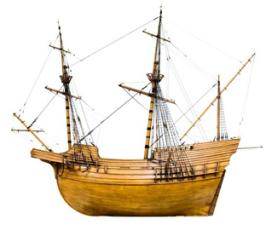
Basque whaling ship
I recently came back from a voyage on a small ship along the west coast of Iceland. One of the highlights of the trip were stops in ports in the Westfjords, an isolated peninsula in the northwest of the island.
One of the nice things about Iceland is the very low violent crime rate. Yearly murders in the country of 360,000 typically range from zero to around five. The average is about 1.8. That is the total number of yearly murders, not the per capita figure. Against this backdrop, I was surprised to learn of a law on the books in the Westfjords, which was only repealed in 2015, that allowed the killing on sight of any Basque found in the region. The law dates back to 1615 and relates to the last documented massacre in Icelandic history.
The Basques, living in what is now northern Spain and southern France between the Pyrenees Mountains and the Bay of Biscay, have a rich and ancient maritime heritage. They were the first to develop industrial whaling using deep-sea ships to hunt for whales. By the middle of the 16th century, 30 Basque ships manned by up to 2,000 men whaled along the coast of Labrador. By the early 17th century Basque whalers had reached Iceland.
The year 1615 was particularly brutal in Iceland, in several senses. The harbors remained blocked by ice until well into the summer. Many livestock did not survive the winter. In mid-summer, three Basque whaling ships arrived in Reykjarfjörður in the Westfjords. Initially, things went well. The Basque captains and local Icelanders negotiated an agreement to allow the Basques to process their catch ashore.
When the ships were ready to sail in September, however, a strong gale blew in from the Denmark Strait and wrecked the three ships. Eighty sailors survived. The three ships’ crews split up. Two crews wintered over in what is now Patreksfjörður and left the following year. The third crew split into two groups and went north to Ísafjarðardjúp.
The troubles started in October when one group of Basque sailors entered the empty house of a merchant and stole some dried fish. In retaliation, Icelanders attacked the sailors as they slept and killed and mutilated 14.
Three days later the local sheriff summoned a judicial council that declared all Basques as outlaws. Just over a week later, 17 more Basques were killed and their bodies mutilated.
In Iceland, the killings were recorded in history as Spánverjavígin, the Slaying of the Spaniards.
Strictly speaking, Icelandic law does not allow the murder of Basques or anyone else. Nevertheless, the ruling of 1615 remained on the books for 400 years until 2015.
As reported by The Telegraph: “The decision to do away with the decree was more symbolic than anything else,” said Jonas Gudmundsson, Westfjords district commissioner, when he officially repealed the law at the Museum of Icelandic Sorcery last month.
Mr Gudmundsson announced the end of the licence to kill at the museum ceremony, culminating in a ceremony where Xabier Irujo, a descendant of one of the murdered Basque whale hunters, and Magnus Rafnsson, descendant of one of the murderers, performed a ceremonial reconciliation.

I expect its still open season on Brits because of the cod wars 🙂
The 300,000 or so Brits who come to Iceland yearly as tourists don’t seem to have a problem.
Pingback: Basque Fact of the Week: Legal to Kill Basques in Iceland | Buber's Basque Page